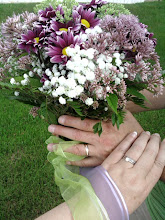- There are more chinese restaurants in Peru than in any other Latin American country: around 6,000, just in Lima.
- In Peru, ginger is known by the Chinese world "kion" rather than the Spanish "gengibre", and soy sauce is "sillau" rather than "salsa de soya".
- Fried rice is known as "arroz chaufa" or simply "chaufa" rather than the Spanish "arroz frito" or "arroz chino".
- There are no "fortune cookies" at the end of your meal . . . rather, you get a white, soft, chewy candy wrapped in a thin edible paper-like wrapping made from sticky rice.
Everyone who knows me well is aware of my "passion" for Peruvian-Chinese cuisine or "chifa". I've been known to eat "chifa" for three days in a row whenever I'm back in Lima on vacation! :) When I was a kid, I would await with delight Friday nights . . . it was "chifa" night! We always went to the same restaurant, "Chifa Taiwan", which was an unassuming, small but clean place. We would always take one of the private booths, closed off with red curtains. The dinner fare typically included fried wontons with tamarind dipping sauce, wonton soup, pork or chicken fried rice, chicken in oyster sauce, roast pork with scallions, and sauté noodles with snow peas, mushrooms and quail eggs . . . all washed down with Inca Kola! :) It was a feast! Ahhh . . . those times! As I grew up, I realized there were "other" Chinese dishes, equally tasty, that soon became part of my favorites:
- Chi Jau Kai chicken (boned chicken pieces marinated in oil, salt, pepper, sugar, ginger, garlic, pisco, soy sauce, and "mensí" or black bean paste sauce, vapor cooked, then drenched in cornstarch, deep fried, and served with oyster sauce and sesame seeds)
- Chicken Roll-ups with Asparagus (chicken filets stuffed with asparagus, drenched in cornstarch, deep fried and served, also, with oyster sauce)
- Crab Claws (Crab claws wrapped in a paste prepared with shrimp, egg white, salt, pepper, sugar, cornstarch, and sesame oil, drenched in cornstarch, fried, and served with lime juice and Chinese cinnamon)







